Analyte Specific Reagent. Analytical and performance characteristics are not established.
- Clone
- 2H7
- Workshop
- IV B201
- Other Names
- B1, Bp35
- Isotype
- Mouse IgG2b, κ

-

Typical results from human peripheral blood lymphocytes stained either with clone 2H7 APC used at 5 μL/test (filled histogram) or with an Isotype control (open histogram).
| Cat # | Size | Price | Quantity Check Availability | ||
|---|---|---|---|---|---|
| 980206 | 500 µL | $363.00 | |||
CD20 is a 33-37 kD, four transmembrane spanning protein, also known as B1 and Bp35. CD20 is expressed on pre-B-cells, resting and activated B cells (not plasma cells), some follicular dendritic cells, and at low levels on a T cell subset. CD20 is heavily phosphorylated on activated B cells and malignant B cells. Homo-oligomeric complexes of CD20 are thought to form Ca2+ conductive ion channels in the plasma membrane of B cells. The CD20 molecule is involved in B-cell activation and is associated with various Src family kinases (Lyn, Lck, Fyn). It exists in a complex with MHC class I and II, CD53, CD81, and CD82.
Product Details
- Reactivity
- Human
- Formulation
- Phosphate-buffered solution, pH 7.2, containing 0.09% sodium azide, 0.2% (w/v) BSA (origin USA) and a stabilizer.
- Preparation
- The antibody was purified by affinity chromatography, and conjugated with APC under optimal conditions.
- Concentration
- 50 µg/mL
- Storage & Handling
- The antibody solution should be stored undiluted between 2°C and 8°C, and protected from prolonged exposure to light. Do not freeze.
- Application
-
Suggested for Flow Cytometry
- Disclaimer
-
WARNINGS AND PRECAUTIONS
- Use appropriate personal protective equipment and safety practices per universal precautions when working with this reagent. Refer to the reagent safety data sheet.
- This antibody contains sodium azide. Follow federal, state and local regulations to dispose of this reagent. Sodium azide build-up in metal wastepipes may lead to explosive conditions; if disposing of reagent down wastepipes, flush with water after disposal.
- All specimens, samples and any material coming in contact with them should be considered potentially infectious and should be disposed of with proper precautions and in accordance with federal, state and local regulations.
- Do not use this reagent beyond the expiration date stated on the label.
- Do not use this reagent if it appears cloudy or if there is any change in the appearance of the reagent as these may be an indication of possible deterioration.
- Avoid prolonged exposure of the reagent or stained cells to light.
Antigen Details
- Antigen References
-
1. Hultin L, et al. 1993. Cytometry 14:196.
2. Tedder T, et al. 1994. Immunol. Today 15:450.
Compare Data Across All Formats
This data display is provided for general comparisons between formats.
Your actual data may vary due to variations in samples, target cells, instruments and their settings, staining conditions, and other factors.
If you need assistance with selecting the best format contact our expert technical support team.
-
APC anti-human CD20

Human peripheral blood lymphocytes were stained with anti-CD... -
FITC anti-human CD20

Human peripheral blood lymphocytes were stained with anti-CD... -
PE anti-human CD20
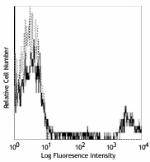
Human peripheral blood lymphocytes were stained with anti-CD... -
PE/Cyanine5 anti-human CD20
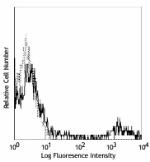
Human peripheral blood lymphocytes were stained with anti-CD... -
Purified anti-human CD20
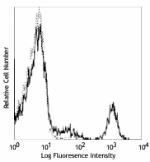
Human peripheral blood lymphocytes were stained with purifie... 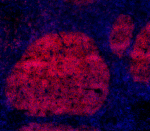
Human frozen tonsil section was fixed with 4% paraformaldehy... -
APC/Cyanine7 anti-human CD20

Human peripheral blood lymphocytes were stained with anti-CD... -
PE/Cyanine7 anti-human CD20
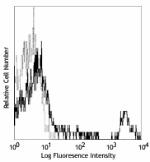
Human peripheral blood lymphocytes were stained with anti-CD... -
Alexa Fluor® 488 anti-human CD20
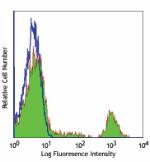
Human peripheral blood lymphocytes were stained with anti-CD... 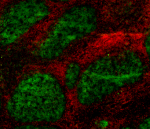
Human frozen tonsil section was fixed with 4% paraformaldehy... -
Alexa Fluor® 647 anti-human CD20
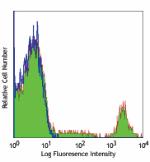
Human peripheral blood lymphocytes were stained with anti-CD... 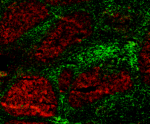
Human frozen tonsil section was fixed with 4% paraformaldehy... -
Pacific Blue™ anti-human CD20
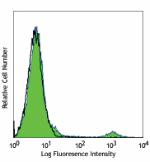
Human peripheral blood lymphocytes were stained with anti-CD... -
Alexa Fluor® 700 anti-human CD20
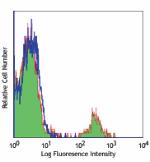
Human peripheral blood lymphocytes were stained with anti-CD... -
PerCP anti-human CD20
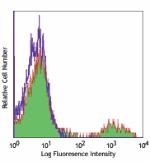
Human peripheral blood lymphocytes were stained with anti-CD... -
PerCP/Cyanine5.5 anti-human CD20

Human peripheral blood lymphocytes were stained with CD19 AP... -
Brilliant Violet 421™ anti-human CD20

Human peripheral blood lymphocytes were stained with CD19 PE... 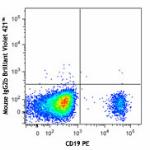
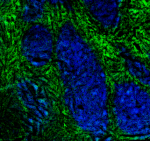
Human frozen tonsil section was fixed with 4% paraformaldehy... -
Brilliant Violet 570™ anti-human CD20
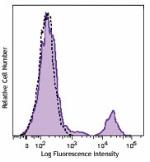
Human peripheral blood lymphocytes were stained with CD20 (c... -
Brilliant Violet 605™ anti-human CD20

Human peripheral blood lymphocytes were stained with CD20 (c... -
Brilliant Violet 650™ anti-human CD20
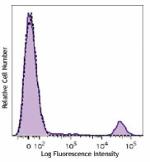
Human peripheral blood lymphocytes were stained with CD20 (c... -
Brilliant Violet 785™ anti-human CD20
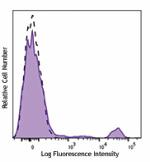
Human peripheral blood lymphocytes were stained with CD20 (c... -
Brilliant Violet 510™ anti-human CD20

Human peripheral blood lymphocytes were stained with CD20 (c... -
Brilliant Violet 711™ anti-human CD20
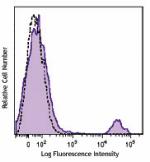
Human peripheral blood lymphocytes were stained with CD20 (c... -
Purified anti-human CD20 (Maxpar® Ready)
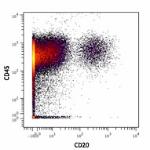
Human PBMCs stained with 154Sm-anti-CD45 (HI30) and 147m-ant... -
PE/Dazzle™ 594 anti-human CD20
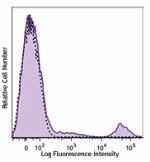
Human peripheral blood lymphocytes were stained with CD20 PE... -
Biotin anti-human CD20
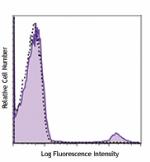
Human peripheral blood lymphocytes were stained with biotiny... -
APC/Fire™ 750 anti-human CD20
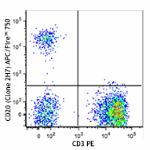
Human peripheral blood lymphocytes were stained with CD3 PE ... 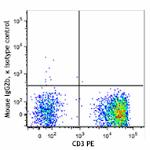
-
Alexa Fluor® 594 anti-human CD20
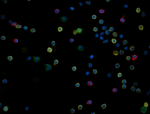
Human peripheral blood mononuclear cells were fixed with 2% ... 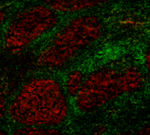
Human frozen tonsil section was fixed with 4% paraformaldehy... -
FITC anti-human CD20
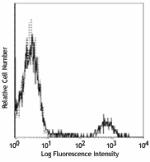
Typical results from human peripheral blood lymphocytes stai... -
Pacific Blue™ anti-human CD20
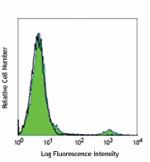
Typical results from human peripheral blood lymphocytes stai... -
APC anti-human CD20

Typical results from human peripheral blood lymphocytes stai... -
PE/Cyanine7 anti-human CD20

Typical results from human peripheral blood lymphocytes stai... -
TotalSeq™-A0100 anti-human CD20
-
TotalSeq™-B0100 anti-human CD20
-
TotalSeq™-C0100 anti-human CD20
-
PerCP/Cyanine5.5 anti-human CD20
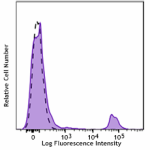
Typical results from human peripheral blood lymphocytes stai... -
Spark NIR™ 685 anti-human CD20

Human peripheral blood lymphocytes were stained with CD19 Br... -
Spark YG™ 593 anti-human CD20

Human peripheral blood lymphocytes were stained with CD19 Al... -
GMP FITC anti-human CD20
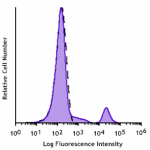
Typical results from human peripheral blood lymphocytes stai... -
TotalSeq™-D0100 anti-human CD20
-
GMP APC anti-human CD20
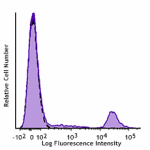
Typical results from human peripheral blood lymphocytes stai... -
Spark Violet™ 500 anti-human CD20

Human peripheral blood lymphocytes were stained with anti-hu... -
GMP Pacific Blue™ anti-human CD20
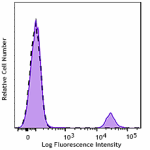
Typical results from human peripheral blood lymphocytes stai... -
GMP PerCP/Cyanine5.5 anti-human CD20

Typical results from human peripheral blood lymphocytes stai... -
Spark Violet™ 538 anti-human CD20

Human peripheral blood lymphocytes were stained with anti-hu... -
APC/Fire™ 750 anti-human CD20
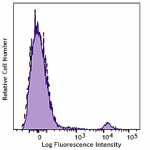
Typical results from human peripheral blood lymphocytes stai... -
PE anti-human CD20
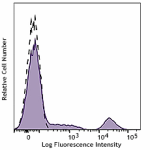
Typical results from Human peripheral blood lymphocytes stai... -
GMP PE/Cyanine7 anti-human CD20

Typical results from human peripheral blood lymphocytes stai... -
Spark Blue™ 515 anti-human CD20

Human peripheral blood lymphocytes were stained with anti-hu... -
GMP APC/Fire™ 750 anti-human CD20
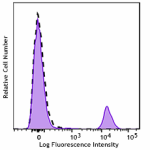
Typical results from human peripheral blood lymphocytes stai... -
GMP PE anti-human CD20

Typical results from human peripheral blood lymphocytes stai... -
Spark Blue™ 550 anti-human CD20 (Flexi-Fluor™)
-
Spark Blue™ 574 anti-human CD20 (Flexi-Fluor™)
-
Spark Red™ 718 anti-human CD20 (Flexi-Fluor™)
-
APC/Fire™ 810 anti-human CD20

Human peripheral blood lymphocytes were stained with anti-hu... -
Alexa Fluor® 660 anti-human CD20

Human peripheral blood lymphocytes were stained with anti-hu...
